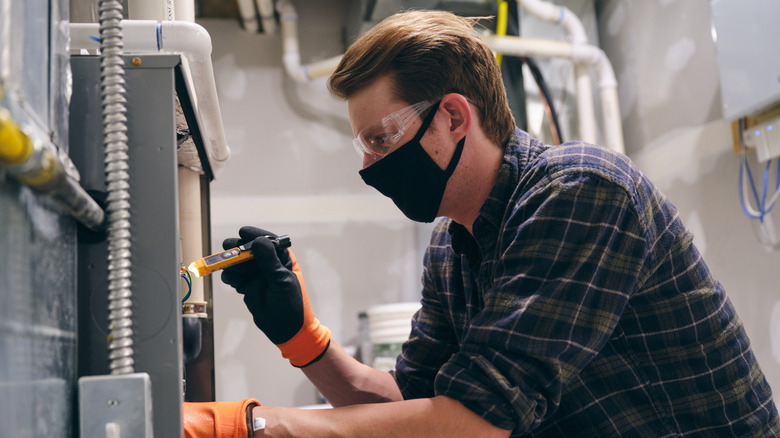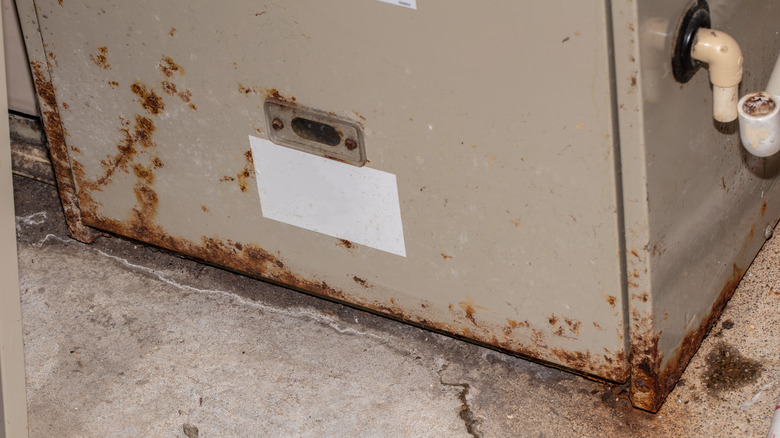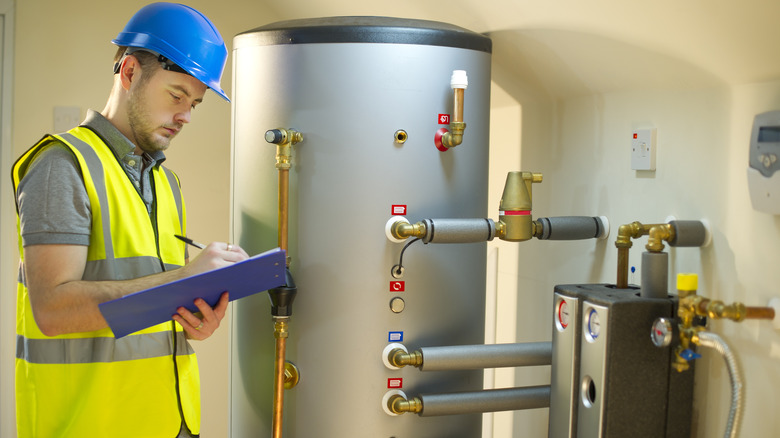Why A Rusted Electric Furnace May Be A Sign Of A Much Bigger Problem
A rusted electric furnace can signal potential larger issues within the heating system. Rust accumulation on the exterior components, such as the furnace cabinet or heat exchanger, may indicate moisture infiltration. Excessive moisture can result from issues like leaks in the ventilation system or condensation buildup. Persistent exposure to moisture can expedite the rusting process and compromise the structural integrity of the furnace. Additionally, rust on the heat exchanger poses a serious concern because it's a critical component that separates combustion gases from the indoor air. Rust here can lead to cracks or holes, allowing carbon monoxide to escape into the living space. This compromises indoor air quality and poses significant safety risks to occupants.
Secondly, rust within the electrical components of the furnace can pose a significant hazard. Rust weakens the conductive properties, such as wiring or conductors, leading to electrical malfunctions, short circuits, or even fires. The compromised integrity of electrical connections can disrupt the furnace's operation, potentially causing system failures or unsafe conditions.
Finally, rust within the combustion chamber may point to an incomplete combustion process. This can occur due to issues like a malfunctioning burner or inadequate airflow. Incomplete combustion produces more moisture and corrosive byproducts, accelerating the rusting of internal components. Addressing any rust issues on your furnace may not resolve the underlying combustion problems, which would then require a comprehensive examination from an HVAC professional and potential costly repairs to ensure the furnace operates safely and efficiently.
How to prevent rust from forming on your furnace
Homeowners can take proactive steps to prevent rust from forming on furnaces, extending the lifespan of the system and maintaining its efficiency, while saving money by avoiding costly repairs or replacements. Most importantly, maintaining a dry environment around the furnace is crucial. Ensure proper ventilation in the furnace room to prevent excessive moisture buildup. Use a dehumidifier if necessary, especially in basements where moisture levels tend to be higher. Moisture is a catalyst for rust formation, and minimizing it can significantly reduce the risk.
Regular inspections and cleanings are essential components of rust prevention. Homeowners should inspect the furnace components, such as the cabinet, heat exchanger, and burner assembly, periodically. Any signs of rust should be addressed promptly. Clean dust and debris from the system regularly to prevent them from accumulating and promoting rust. On that note, scheduling professional annual maintenance is crucial. HVAC technicians can perform a comprehensive inspection, identify potential rust issues, and address them before they become more significant problems.
Applying a rust inhibitor or coating to susceptible areas can create a protective barrier against corrosion. These coatings are available at hardware stores and can be applied to surfaces prone to rust. Additionally, ensuring proper combustion is vital for rust prevention. A well-maintained burner assembly and proper airflow contribute to complete combustion, reducing the production of corrosive byproducts. Replace air filters regularly to maintain good airflow and prevent dust and debris from accumulating on critical components.
When it's time to call the professionals
If you own a home and are responsible for the maintenance of your furnace, regular personal inspections are a good idea. Nevertheless, some circumstances necessitate the intervention of professionals to maintain residents' safety. Homeowners should promptly contact professionals if they observe extensive rust on critical furnace components, such as the heat exchanger or within the combustion chamber, as these areas are vital for safe and efficient operation. Professional HVAC technicians have the expertise to assess the severity of rust issues, identify underlying problems, and perform necessary repairs or replacements to ensure the furnace operates safely and efficiently. Early intervention by professionals can prevent further damage and mitigate risks associated with rust on the furnace.
Unfortunately, a rusty furnace often requires repair and replacement. Once rust has started to build up, it cannot be completely removed and may require a completely new furnace to function safely. According to Forbes, homeowners could expect to pay anywhere from $1,000 to $7,000 for a new electric furnace depending on the size and type and without including the cost of labor for removal and installation. Larger homes require a more powerful furnace to heat additional square footage. Nevertheless, the price tag on a new furnace can be troublesome for many homeowners, which is why regular inspection and intervention is essential to elongate the life of your furnace and avoid these costly consequences.


